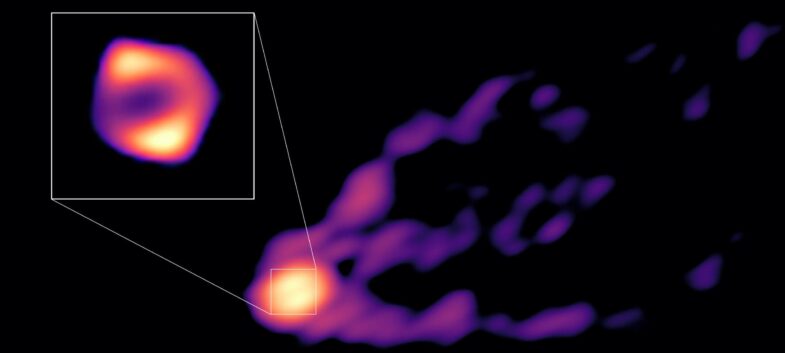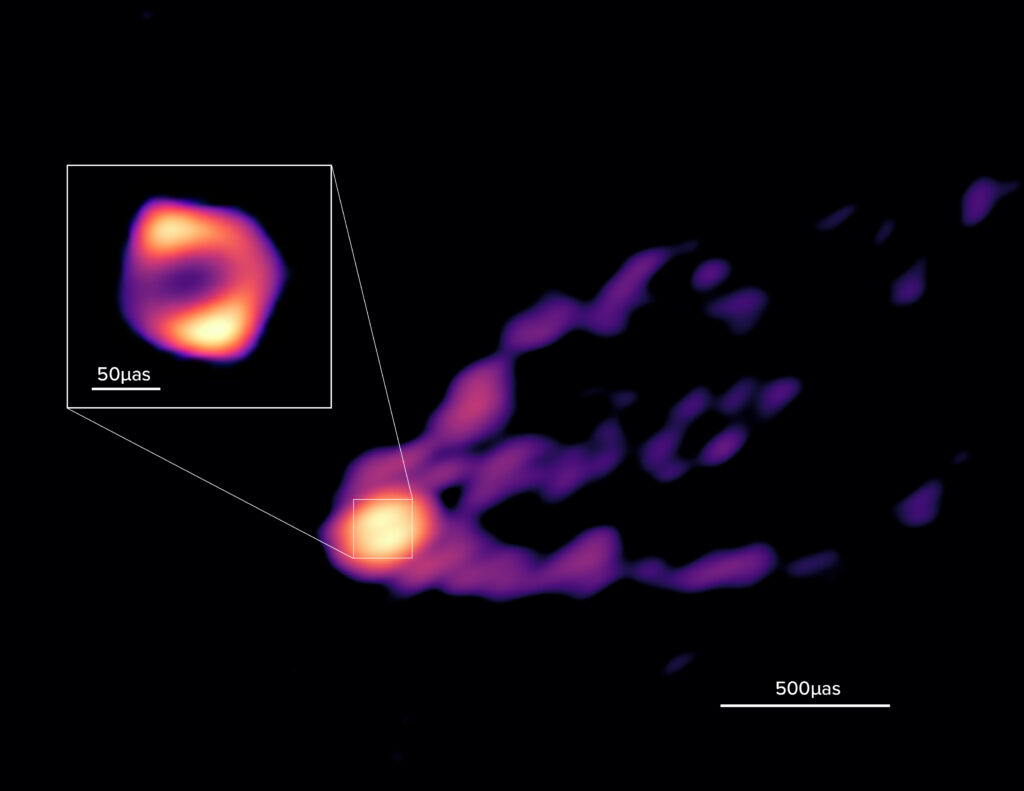
New black hole images reveal more detail and a larger ring
A team of astronomers including MIT Haystack Observatory scientists have captured a new view of M87, the first black hole imaged by the Event Horizon Telescope (EHT) in 2017. The new images show a thicker, fluffy ring and plasma from the central ring, allowing the team to observe a connection between the ring and the base of the jet.
Results were published today in the journal Nature (Lu et al, 2023).
“This is the first image where we are able to pin down where the ring is, relative to the powerful jet escaping out of the central black hole,” says Kazunori Akiyama, research scientist at MIT Haystack Observatory, who developed the SMILI imaging software used to visualize the black hole. “Now we can start to address questions such as how matter is captured by a black hole, and how it sometimes manages to escape.”
This study also uses the precise very long baseline interferometry (VLBI) technique honed over decades by scientists at Haystack and colleagues worldwide; data was obtained using the Global Millimeter VLBI Array (GMVA), the Greenland telescope, and the Atacama Large Millimeter/submillimeter Array (ALMA). ALMA’s involvement was made possible by the ALMA Phasing Project (APP), led by Haystack’s Lynn Matthews.
“If something major happens in the world, you might tune in to both AM and FM to assemble a ‘complete picture’ of the event,” says Geoffrey Crew, co-author and Haystack research scientist, who works with ALMA and the EHT. “This is no different. You might think of the EHT M87* image being made in FM, and this result coming from AM. Both tell a story, and together it is a better story.”
For more information, please see the full story on MIT News as well as the main press release (also at https://www.eso.org/public/news/eso2305/).
